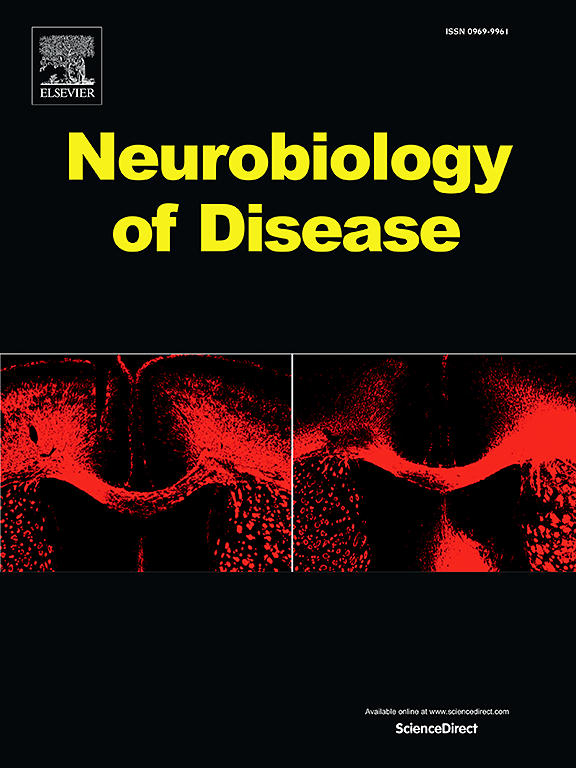错误折叠野生型SOD1蛋白在散发性肌萎缩性侧索硬化症(ALS)中的潜在作用:证据综述
IF 5.6
2区 医学
Q1 NEUROSCIENCES
引用次数: 0
摘要
肌萎缩性侧索硬化症(ALS)是一种进行性神经退行性疾病,其特征是运动皮质、脑干和脊髓中的运动神经元选择性丧失。1993年,在Cu,Zn超氧化物歧化酶(SOD1)基因中发现了第一个与ALS相关的基因突变,约占家族性ALS病例的20% %。这部分患者的毒性机制被认为是由于蛋白质倾向于错误折叠和聚集成细胞质包涵体而获得毒性功能。免疫组织化学研究表明,在没有SOD1突变的ALS患者的运动神经元和神经胶质细胞中也检测到错误折叠的野生型SOD1 (wtSOD1)。有人提出,中断或异常的翻译后修饰导致wtSOD1采用与突变蛋白相似的毒性构象。随后的机制研究表明,这种错误折叠的wtSOD1可以通过与突变型SOD1-ALS相似的途径破坏细胞功能并导致运动神经元死亡。鉴于目前有限的神经保护治疗可以有效地减缓或逆转疾病进展,针对家族性和散发性ALS病例的致病机制代表了一种有希望的治疗方法,适用于更广泛的患者群体。本文回顾了越来越多的证据,这些证据支持或质疑wtSOD1错误折叠在散发性ALS病理生理中的作用,并探讨了该机制在疾病进展中的潜在意义。了解错误折叠的wtSOD1如何促进疾病发病机制,为开发更广泛的治疗这种毁灭性疾病提供了新的机会。本文章由计算机程序翻译,如有差异,请以英文原文为准。
The potential role of misfolded wild-type SOD1 protein in sporadic amyotrophic lateral sclerosis (ALS): a review of the evidence
Amyotrophic lateral sclerosis (ALS) is a progressive neurodegenerative disorder characterised by the selective loss of motor neurons in the motor cortex, brainstem and spinal cord. In 1993, the first ALS-linked gene mutations were identified in the Cu,Zn superoxide dismutase (SOD1) gene, which account for approximately 20 % of familial ALS cases. The mechanism of toxicity in this subset of patients is thought to arise from a gain-of-toxic function from the protein's propensity to misfold and aggregate into cytoplasmic inclusions. Immunohistochemical studies have shown that misfolded wildtype SOD1 (wtSOD1) is also detected in the motor neurons and glial cells of ALS patients without SOD1 mutations. It is proposed that disrupted, or aberrant, post-translational modifications cause wtSOD1 to adopt a toxic conformation similar to that of the mutant protein. Subsequent mechanistic studies have shown that this misfolded wtSOD1 can disrupt cellular function and lead to motor neuron death through pathways similar to those observed in mutant SOD1-ALS. Given the limited neuroprotective treatments currently available that can effectively slow or reverse disease progression, targeting a pathogenic mechanism that features in both familial and sporadic ALS cases represents a promising therapeutic approach for a broader patient population. This review examines the growing body of evidence that supports or challenges the role of misfolded wtSOD1 in the pathophysiology of sporadic ALS and explores the potential implications of this mechanism in disease progression. Understanding how misfolded wtSOD1 contributes to disease pathogenesis provides new opportunities for developing more widely available treatments for this devastating disease.
求助全文
通过发布文献求助,成功后即可免费获取论文全文。
去求助
来源期刊

Neurobiology of Disease
医学-神经科学
CiteScore
11.20
自引率
3.30%
发文量
270
审稿时长
76 days
期刊介绍:
Neurobiology of Disease is a major international journal at the interface between basic and clinical neuroscience. The journal provides a forum for the publication of top quality research papers on: molecular and cellular definitions of disease mechanisms, the neural systems and underpinning behavioral disorders, the genetics of inherited neurological and psychiatric diseases, nervous system aging, and findings relevant to the development of new therapies.
 求助内容:
求助内容: 应助结果提醒方式:
应助结果提醒方式:


